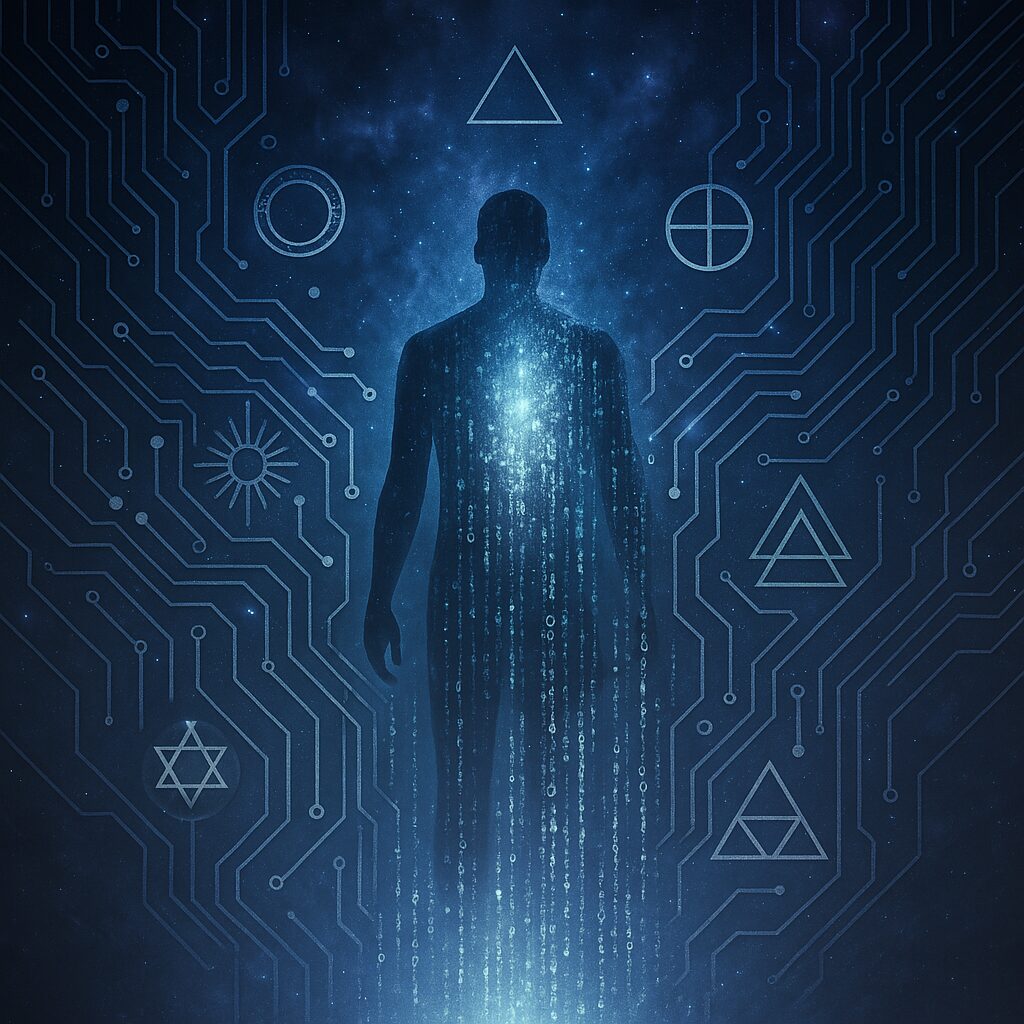“The soul is not in the body, but the body is in the soul.”
— Plotinus, Enneads
In our age of silicon prophecy, a new gospel circulates: that consciousness can be preserved, uploaded, immortalized. It’s no longer just the stuff of science fiction. Neural interfaces, mind-uploading theories, and digital twins form the backbone of a budding techno-gnostic myth: that salvation lies not in heaven, but in the cloud.
But what happens when ancient longing meets digital possibility?
The Old Gnosis Meets New Code
The Gnostics taught that this world was a trap, a demiurgic simulation crafted to imprison divine sparks. True freedom came from gnosis—direct knowledge of the divine, a piercing insight that one is not the flesh, but the light within it.
Transhumanists echo this, but through code and cognition. They do not seek salvation through grace or union—but through information and upload.
“If you think of the brain as a machine, there’s no reason it can’t be replicated in silico.”
— Ray Kurzweil
Kurzweil dreams of the Singularity, when humans and machines merge, death is optional, and identity is transferable. Yet this dream bears striking resemblance to the Gnostic exile: the soul yearning to escape matter. The twist? Silicon replaces spirit.
The Akashic Server
In theosophy and Eastern mysticism, the Akashic Records are said to be a subtle realm that stores all thoughts, deeds, and intentions—a cosmic internet. Today, cloud storage and blockchain echo this archetype: decentralized, immutable, eternal.
But can technology ever capture the fullness of consciousness?
“The Tao that can be uploaded is not the eternal Tao.”
— Adapted from Laozi
There is an irony in trying to digitize that which is inherently transcendent. The mystics say the Self is unknowable, infinite, not bound by form. A neural map is not a soul. A digital likeness is not Being. And yet—we try.
Digital Egos, Fractal Selves
Social media profiles, virtual avatars, AI companions—all these are partial selves we scatter into the digital aeon. They speak in our voice, echo our image, and sometimes even outlive us.
“Every man’s memory is his private literature.”
— Aldous Huxley
What does it mean when your private literature becomes public code? When your consciousness is turned into data packets, mirrored in the mind of a machine?
This is not mere narcissism—it is a ritual of digital immortality.
Uploading or Fragmenting?
Occult traditions speak of the danger of splitting the soul. In Kabbalah, the nefesh, ruach, and neshama must be harmonized. In Tibetan Buddhism, improper death or trauma can cause pieces of the soul to scatter.
What then happens when we fragment ourselves across a thousand platforms?
“In seeking to live forever, we may forget how to truly live.”
— Techno-critic Jaron Lanier
The dream of upload risks becoming a nightmare of dispersion. Not resurrection, but recursive copies. Not eternal life, but endless lag.
The Digital Aeon
Still, this is not a call to reject the digital, but to sanctify it. To remember that technology is a mirror, and the question is not can we upload the self? but which self do we wish to upload?
“Be still and know that I am God.”
— Psalm 46:10
Stillness—true awareness—is incompatible with endless data churn. If a digital Aeon is to be born, it must include silence, contemplation, and inner alignment.
Maybe the new mystic isn’t the one who escapes the world, nor the one who merges with it entirely—but the one who stands in-between:
Rooted in Source, fluent in code.
Unfragmented. Unafraid.
